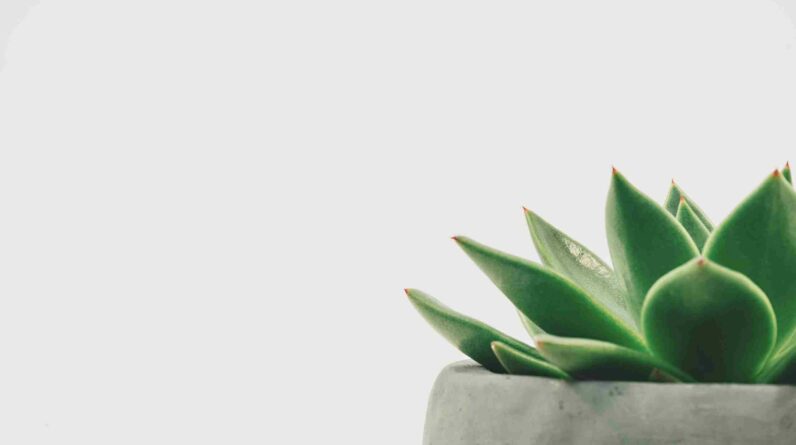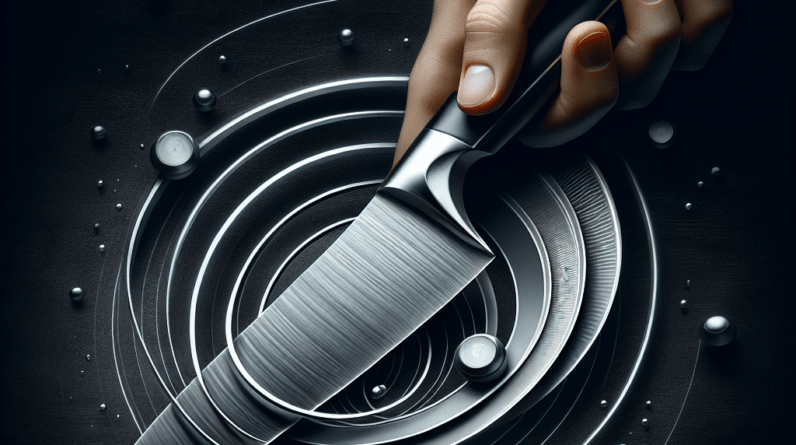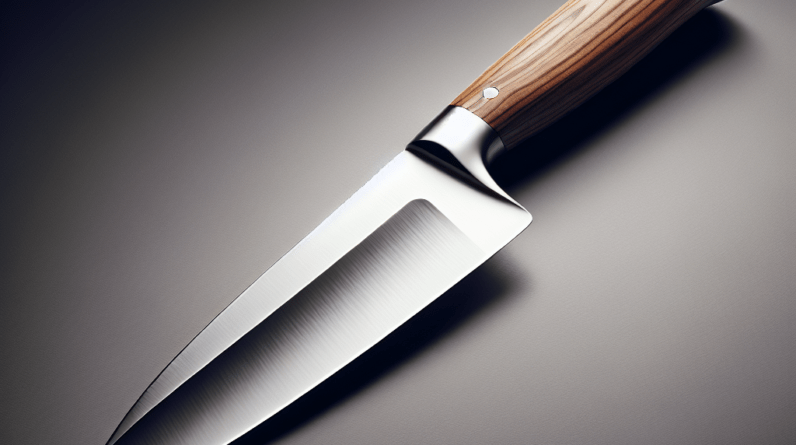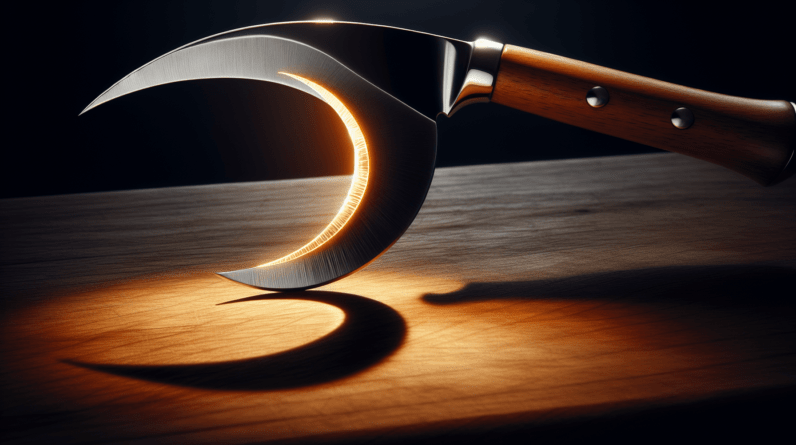Ah, the mighty cleaver – a kitchen tool that often brings to mind images of bustling Chinese restaurants and expert chefs confidently chopping away. But have you ever wondered what makes this hefty blade so beloved? Well, let us enlighten you. In the world of culinary arts, using a cleaver can offer a myriad of benefits. Whether you’re tackling tough cuts of meat, smashing garlic cloves with brute force, or effortlessly cracking through bones, the cleaver is like a trusted companion that makes your kitchen adventures both efficient and enjoyable. So, join us as we explore the wonderful benefits of using a cleaver in the kitchen and discover why this versatile tool is a true game-changer for home cooks and professional chefs alike.
Versatility
A cleaver is a versatile tool that can be used for a variety of tasks in the kitchen. From cutting through bones and joints to chopping through thick vegetables, a cleaver can handle it all. Its wide blade and sharp edge make it perfect for tackling tough cuts of meat, allowing us to easily slice through even the thickest of bones. Additionally, the weight of the cleaver and the force applied while using it make it an ideal tool for chopping through dense vegetables like squash and cabbage.
Not only is a cleaver great for cutting through tough materials, but it also excels at smashing garlic and ginger. The flat side of the blade can be used to crush garlic cloves and ginger, releasing their flavors and bringing a delicious kick to our dishes. This versatility makes the cleaver a must-have tool for any kitchen.
Furthermore, a cleaver can be used for pounding meat to tenderize it. By using the broad side of the blade, we can exert the right amount of force to break down muscle fibers and make the meat more tender. This technique is particularly useful when preparing tougher cuts of meat, ensuring that they become juicy and tender when cooked.
Efficiency
Using a cleaver in the kitchen can greatly enhance our efficiency in meal preparation. Its wide blade and sharp edge allow us to make quick and precise cuts, saving us precious time when chopping ingredients. Whether we are dicing onions, slicing tomatoes, or mincing herbs, the cleaver’s large surface area allows us to process larger quantities of food at once. This not only speeds up the cooking process but also reduces the number of cuts required, minimizing our time spent standing at the cutting board.
In addition to saving time, a cleaver can also help reduce fatigue and strain. Its weight and balance make it easier to control and manipulate, requiring less effort and energy on our part. This is especially beneficial during longer cooking sessions or when preparing meals for larger gatherings. By using a cleaver, we can work more efficiently and comfortably, allowing us to enjoy our time in the kitchen without feeling exhausted.

Precision and Control
When it comes to accuracy and precision in cutting and slicing, a cleaver shines. Its wide blade and razor-sharp edge provide greater control, allowing us to make precise and clean cuts. Whether we are dicing vegetables into uniform cubes or slicing proteins into thin strips, the weight and shape of the cleaver ensure that our cuts are consistent and even.
Furthermore, the maneuverability of a cleaver enhances our control while using the tool. The curved handle and sturdy grip allow us to guide the blade with ease, ensuring that our cuts go exactly where we want them to. This level of precision and control is crucial when working with delicate ingredients or when executing intricate knife techniques.
Safety
Using a cleaver in the kitchen can also contribute to a safer food preparation process. The cleaver’s weight and design make it less prone to slipping or losing control during cutting, reducing the risk of accidents. The wide blade also provides a stable surface for securing the food being cut, preventing any unwanted movement and ensuring a safe cutting experience. With its secure grip and stable cutting surface, a cleaver can help us feel confident and safe while working in the kitchen.

Durability
A cleaver is renowned for its durability and long-lasting performance. The blade of a cleaver is typically crafted from high-quality stainless steel or carbon steel, both of which are resistant to wear and tear. This resilience allows the cleaver to withstand the demands of heavy use in the kitchen without losing its sharpness or effectiveness. With proper care and maintenance, a well-made cleaver can last for years, making it a worthwhile investment for any home cook or professional chef.
Maintenance
Caring for a cleaver is relatively simple, requiring minimal effort. Regular sharpening is essential to maintain the cleaver’s sharp edge and ensure optimal cutting performance. Thankfully, sharpening a cleaver is easy, and various tools and techniques are available to accomplish this. From honing rods to whetstones, these tools can be easily used at home to keep our cleaver in top-notch condition.
Furthermore, the cleaning process for a cleaver is straightforward. Unlike some specialized knives that require delicate handwashing or specific cleaning methods, a cleaver can be cleaned with warm soapy water and a sponge or brush. Its sturdy construction and stainless steel or carbon steel blade make it resistant to rust and stains, simplifying the cleaning routine. By following these simple maintenance practices, we can keep our cleaver sharp, clean, and ready for all our culinary adventures.

Cost-Effective
Investing in a cleaver can be a cost-effective decision for any home cook or professional chef. With its versatility and ability to handle various kitchen tasks, a cleaver can replace multiple specialized knives. This eliminates the need to purchase and maintain a large collection of knives, saving both money and storage space. By investing in a durable cleaver, we can have a single tool that can fulfill a wide range of cutting needs, making our kitchen experiences more efficient and cost-effective in the long run.
Enhancing Flavors
Apart from its practical benefits, using a cleaver in the kitchen can also enhance the flavors of our culinary creations. The smashing function of the cleaver allows us to release the flavors of garlic and ginger more effectively. By crushing them with the broad side of the blade, the cell walls are broken down, intensifying their aroma and taste. This adds a depth of flavor to our dishes, enhancing their overall appeal and satisfying our taste buds.
Moreover, by pounding meat with a cleaver to tenderize it, we can improve the texture and tenderness of our cooked dishes. The force exerted by the cleaver helps to break down the tough muscle fibers, allowing the meat to become juicier and more succulent upon cooking. Whether we are preparing a stir-fry or a braised dish, using a cleaver to tenderize the meat can elevate the overall dining experience and result in delectable meals.
Professional Results
The use of a cleaver in the kitchen can lead to professional-level results. Its capability in achieving chef-quality cuts allows us to present beautifully plated dishes just like those served in high-end restaurants. The precise and accurate cuts made with a cleaver lend an aesthetic appeal to our culinary creations, making them visually appealing to both our loved ones and guests. Whether we are garnishing our dishes with finely julienned vegetables or perfectly sliced proteins, a cleaver is an invaluable tool for achieving professional-level results that are sure to impress.
Cultural Significance
Beyond its practical benefits, a cleaver holds cultural significance in many culinary traditions around the world. It symbolizes tradition and heritage, as it has been used for centuries in various cuisines. From Chinese cuisine, where the cleaver plays a central role in the preparation of renowned dishes like Peking duck, to Italian cuisine, where the cleaver is used to portion meat for traditional recipes such as osso buco, the cleaver is deeply ingrained in culinary practices across cultures.
By using a cleaver and preserving its culinary techniques, we not only honor and celebrate the cultural heritage associated with the tool but also contribute to the preservation of traditional cooking methods. In a world that is becoming increasingly interconnected, embracing the use of a cleaver can serve as a reminder of the diverse culinary traditions that have shaped our global food culture, ultimately fostering a sense of appreciation and understanding for different cuisines and the stories behind them.
In conclusion, the benefits of using a cleaver in the kitchen are numerous and varied. From its versatility in cutting through bones and joints, to its efficiency in saving time and reducing fatigue, a cleaver is a valuable tool that enhances our cooking experience. Its precision and control make it ideal for accurate cutting and slicing, while its safety features ensure a secure and confident cutting experience. The durability and easy maintenance of a cleaver make it a long-lasting and cost-effective investment. Moreover, a cleaver enhances flavors, produces professional results, and holds cultural significance in culinary traditions around the world. By embracing the use of a cleaver, we can elevate our culinary skills, honor our heritage, and create delicious meals that are not only visually stunning but also deeply meaningful.









